Apps
Auto Added by WPeMatico
Auto Added by WPeMatico
Tim Cook thinks people should get off their iPhones and decrease their engagement with apps. The Apple CEO, speaking at the TIME 100 Summit today, was discussing the addictive nature of our mobile devices and Apple’s role in the matter when he made these comments. He said the company hadn’t intended for people to be constantly using their iPhones, and noted he himself has silenced his push notifications in recent months.
“Apple never wanted to maximize user time. We’ve never been about that,” Cook explained.
It’s certainly an interesting claim, given that Apple designed a platform that allowed app developers to constantly ping their users with the most inane notifications — from getting a new follower on a social app to a sale in a shopping app to a new level added to a game and so much more.
The very idea behind the notification platform, opt-in as it may be, is that developers should actively — and in real time — try to capture users’ attention and redirect them back to their apps.
This is not how such an alert mechanism had to be designed.
An app notification platform could have instead been crafted to allow app developers to notify users in batches, at designed intervals within users’ control. For example, users could have specified that every day at noon they’d like to check in on the latest from their apps.
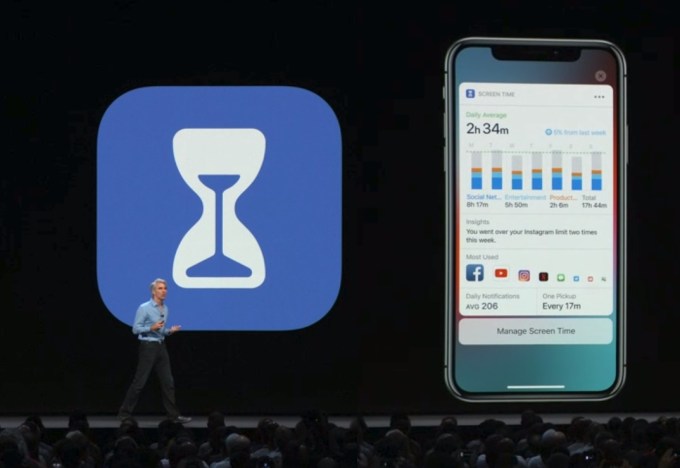
Or, in building out the iOS App Store, Apple could have implemented a “news feed” of sorts — a dedicated channel wherein users could opt to check in on all the latest news from their installed apps.
Or perhaps Apple could have structured a notification platform that would have allowed users to pick between different classes of notifications. Urgent messages — like alerts about a security breach — could have been a top-level tier; while general information could have been sent as a different type of notification. Users could have selected which types of alerts they wanted, depending on how important the app was to them.
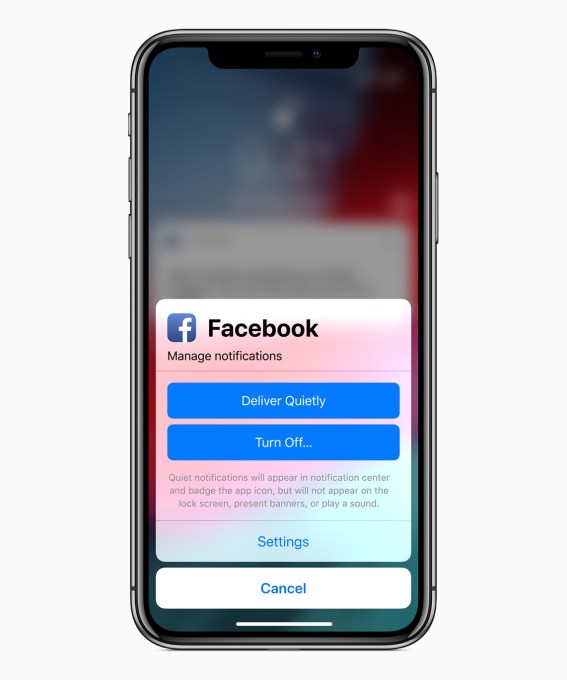 These are just a few of many possible iterations. A company like Apple could have easily come up with even more ideas.
These are just a few of many possible iterations. A company like Apple could have easily come up with even more ideas.
But the fact of the matter is that Apple’s notification platform was built with the idea of increasing engagement in mind. It’s disingenuous to say it was not.
At the very least, Apple could admit that it was a different era back then, and didn’t realize the potential damage to our collective psyche that a continually buzzing iPhone would cause. It could point out how it’s now working to fix this problem by putting users back in control, and how it plans to do more in the future.
Instead, it created a situation where users had to turn to the only defense left to them: switching off push notifications entirely. Today, when users install new apps they often say “No” to push notifications. And with Apple’s new tools to control notifications, users are now actively triaging which apps can get in touch.
In fact, that’s what Tim Cook says he did, too.
“If you guys aren’t doing this — if you have an iPhone and you’re not doing it, I would encourage you to really do this — monitor these [push notifications],” the CEO suggested to the audience.
“What it has done for me personally is I’ve gone in and gutted the number of notifications,” Cook said. “Because I asked myself: ‘Do I really need to be getting thousands of notifications a day?’ It’s not something that is adding value to my life, or is making me a better person. And so I went in and chopped that.”
Yep. Even Apple’s CEO is done with all the spam and noise from iPhone apps.
The comment, of course, was supposed to be a veiled reference to the addictive nature of some apps — social media apps in particular, and especially Facebook. Today, Apple throws barbs at Facebook any time it can, now that the company has fallen out of public favor due to its ongoing data privacy violations and constant scandals.
But a more truthful telling of the iPhone’s past would recall that Facebook’s app — and all its many notifications — was originally a big selling point for Apple’s mobile device.
When the App Store first launched in 2008, Facebook proudly sat in the top row in a featured position. It was heavily promoted to users because it was a prime example of the iPhone’s utility: here was this popular social network you could now get to right from your phone. Amazing!
The fact that Facebook — and every other app — later leveraged the iOS push notification platform to better its own business without regard to how that would impact users isn’t entirely app developers’ collective fault. The notification platform itself had left the door wide open for that sort of psychological abuse to occur, simply because of its lack of user-configured, user-friendly controls.

Above: The App Store at launch, via The NYT
A decade after the App Store launched, Apple finally started to dial back on the free-for-all on user attention.
It announced its suite of digital wellness tools at WWDC 2018, which included Screen Time (a dashboard for tracking and limiting usage); increased parental controls; and finally a way to silence the barrage of notifications, without having to dig around in iOS Settings.
Now Tim Cook wants to have us believe that Apple had never wanted to cause any of this addiction and distraction — despite having created the very platform that made it all possible in the first place, which in turn, helped sell devices.
Isn’t it telling that the exec has had to silence his own iPhone using these new tools? Isn’t that something of an admission of culpability here?
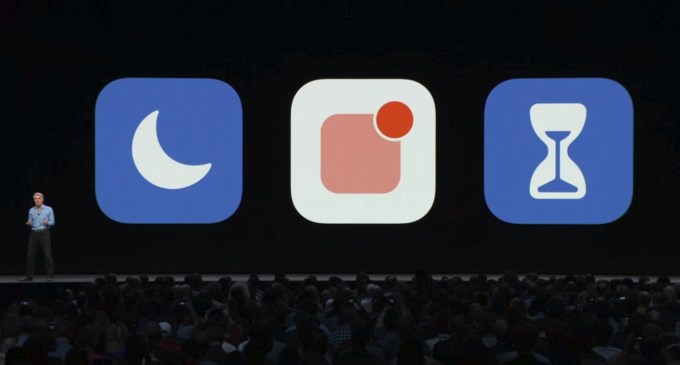
“Every time you pick up your phone, it means you’re taking your eyes off whoever you’re dealing with, are talking with, right?,” Cook continued. “And if you’re looking at your phone more than you’re looking at somebody else’s eyes, you’re doing the wrong thing,” he said. “We want to educate people on what they’re doing. This thing will improve through time, just like everything else that we do. We’ll innovate there as we do in other areas.”
“But basically, we don’t want people using their phones all the time. This has never been an objective for us,” said Cook.
Except, of course, for those 10 years when it was.
Powered by WPeMatico
The market for voice apps has opened up — Amazon Alexa’s platform alone has more than 80,000 skills as of earlier this year — and there’s little sign of that growth slowing now that smart speakers have hit critical mass in the U.S. To capitalize on this trend, Voiceflow, a startup making it easier for product teams to build voice applications for Alexa and Google Assistant, has raised $3 million in seed funding.
The round was led by True Ventures, and includes participation from Product Hunt founder Ryan Hoover, Eventbrite founder Kevin Hartz and InVision founder Clark Valberg. The company has previously raised $500,000 in pre-seed funding.
Explains Voiceflow CEO and co-founder Braden Ream, the idea for a collaborative platform for building voice apps came from direct experience as a voice app developer.
The team — which also includes Tyler Han, Michael Hood and Andrew Lawrence — had decided to build a voice application offering interactive children’s stories for Alexa, called Storyflow.
But as the team began to build out its library of these choose-your-own-adventure stories, they realized the process wasn’t scaling fast enough to serve their user base — they simply couldn’t build the storyboards with all their branches fast enough.

“At some point, we had the idea to just do a drag-and-drop,” says Ream. “I wished I could build the flow chart, the scripting and the actual coding — I wished this was all one step. That led us to build a really early iteration of what is now Voiceflow. It was sort of an internal tool,” he continues. “And being the nerds that we are, we kept making the platform better by adding logic, variables and modularity.”
The original plan was to make Storyflow’s platform a “YouTube of voice” so anyone could build their stories easily.
But when the Storyflow community got ahold of what the team had built, they very quickly wanted to use it to build their own voice apps — not just interactive stories.
“That’s when the light bulb went off for us,” notes Ream. “This could easily be the central platform for building voice apps, and not necessarily interactive children’s stories. The pivot was very easy,” he says. “All we had to do was change our name from Storyflow to Voiceflow.”

The platform officially launched in November, and today has more than 7,500 customers who have published some 250 voice apps using its tools.
Voiceflow is designed to be non-technical for those who don’t know how to code. For example, its two basic block types are “speak” and “choice.” Its blocks are organized on the screen through drag-and-drop, as users design the flow of their app. For more technical users, an advanced section allows you to add logic and variables — but it’s still entirely visual.
For enterprise customers, there’s also an API block in Voiceflow that allows the customer to integrate the business’s own API into their voice app.
What’s also interesting about the product is its collaborative features. While Voiceflow is free for individuals, its business model is focused on allowing teams to work together to build voice apps. Priced at $29 per month in its paid workspaces, voice agencies that have a larger staff — including linguists, voice user interface designers and developers, for example — can all work together on one board, share projects and hand off assets more easily.

With the seed funding, Voiceflow plans to grow the team by hiring more engineers and continue to develop the platform.
Longer-term, the company wants to help people design better, more human-sounding voice apps through its platform.
“The problem right now is you have documentation and best practices by Google. Then you have the exact same on the Alexa side, but there’s no coherent industry standard. And there’s certainly no tangible base of examples, or easy way to put these into practice,” Ream explains. “If we can help spawn another 10,000 voice user interface designers — we can help train them and give them a platform that’s accessible, where they can collaborate with each other — I think you’re going to see a tremendous uplift in the quality of conversations.”
On this front, Voiceflow has started a program called Voiceflow University, which today includes video tutorials but will later become a more standardized training course.
In addition to the videos, Voiceflow networks with its community directly on Facebook, where more than 2,500 developers, linguists, educators, designers and entrepreneurs actively discuss the voice app design and development process.

This interaction between Voiceflow and its user base was one of the key selling points for True Ventures’ Tony Conrad.
“After I left the [pitch] meeting and I started digging around a little bit, the thing that blew me away was the engagement of the community of developers. That’s unlike anybody else. The single biggest differentiator of this platform is actually Braden and the team’s engagement with the community,” Conrad says. “It reminds me of early WordPress.”
Voiceflow also recently worked with another visual design tool, Invocable, which has shut down, to allow its users to transition to Voiceflow’s platform.
There is, perhaps, a cautionary tale in there — Invocable, in its farewell blog post, points out that people continue to use smart speakers mainly for things like music, news, reminders and simple commands. It also says that Natural Language Processing and Natural Language Understanding haven’t developed to the point where they can support higher-quality voice apps. That day will likely come to pass, but there’s a bit of a timing issue when it comes to betting on the right platform to support the voice app development market in the meantime, ahead of widespread consumer adoption.
Toronto-based Voiceflow is a team of 12 today and looking to grow.
Powered by WPeMatico
Twitter shut down Dom Hoffman’s app Vine, giving away the short-form video goldmine to China’s TikTok. Now a year and half since Hoffman announced he’d reimagine the app as V2 then scrapped that name, his follow-up to Vine called Byte has finally sent out the first 100 invites to its closed beta. Byte will let users record or upload short, looped vertical videos to what’s currently a reverse-chronological feed.
the byte beta we’ve been running with friends and family *feels* exactly like the vine friends and family beta, down to the weird but appealing randomness of the videos. that’ll change as we expand, but it’s a pretty good sign pic.twitter.com/rBbQrNtTJ7
— dom hofmann (@dhof) April 22, 2019
 It will be a long uphill climb for Byte given TikTok’s massive popularity. But if it differentiates by focusing less on lip syncing and teen non-sense so it’s less alienating to an older audience, there might be room for a homegrown competitor in short-form video entertainment.
It will be a long uphill climb for Byte given TikTok’s massive popularity. But if it differentiates by focusing less on lip syncing and teen non-sense so it’s less alienating to an older audience, there might be room for a homegrown competitor in short-form video entertainment.
Hoffman tells TechCrunch that he’s emboldened by the off-the-cuff nature of the beta community, which he believes proves the app is compelling even before lots of creative and funny video makers join. He says his top priority is doing right by creators so they’ll be lined up to give Byte a shot when it officially launches even if they could get more views elsewhere.
For now, Hoffman plans to keep running beta tests, adding and subtracting features for a trial by fire to see what works and what’s unnecessary. The current version is just camera recordings with no uploads, and just a feed with Likes and comments but no account following. Upcoming iterations from his seven-person team will test video uploads and profiles.
One reassuring point is that Hoffman is well aware that TikTok’s epic rise has changed the landscape. He admits that Byte can’t win with the exact same playbook Vine did when it faced an open field, and it must bring something unique. Hoffman tells me he’s a big fan of TikTok, and sees it as one evolutionary step past Vine, but not in the same direction as his new app
Does the world need Vine back if TikTok already has over 500 million active users? We’ll soon find out of Hoffman can take a Byte of that market.
Powered by WPeMatico
Cyrus Summerlin and Max Hellerstein, who previously created the Push for Pizza app (which allowed users to order a pizza with the push of a button), are officially launching their new startup today, Down to Shop.
The app bills itself as both a modern reinvention of QVC and “the funnest way to shop.” It allows users to watch funny videos featuring products that can be purchased directly from the app.
In an email, Hellerstein said the pair created Down to Shop out of dissatisfaction with existing advertising and e-commerce. Summerlin described it as “a hypermedia commerce platform.”
“We’ve created a self-aware, fun and entertaining, interactive environment that gets customers to engage with brands like never before — because they want to,” Summerlin said. “What a concept!”
To do this, Down to Shop says it has recruited a creative team of Upright Citizens Brigade alums and Instagram influencers to star in its shows, which are written, filmed and edited in the startup’s Los Angeles studios. The content is built around four-week seasons, with daily episodes across five shows each season.
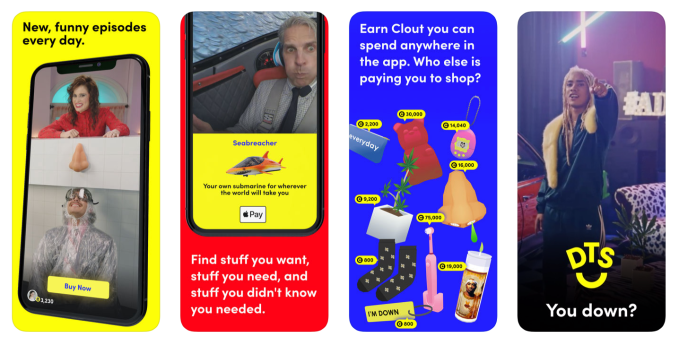
You can download the iOS app now, then swipe through different videos and games. Judging from the videos available at launch, the app is holding true to its promise of “content first, advertising second,” with laid-back, tongue-in-cheek shows that also happen to feature promoted products.
By playing games and watching videos, you also earn Clout, the in-app currency that be used to make purchases. As for the products available to purchase, the company says it’s already working with more than 60 brands, including Sustain Condoms, Dirty Lemon (water) and Pretty Litter (cat litter).
Down to Shop’s investors include Greycroft, Lerer Hippeau and Firstmark. The startup isn’t disclosing the size of its funding, but according a regulatory filing, it raised $5.9 million last fall.
Powered by WPeMatico
“We want your followers to focus on what you share, not how many likes your posts get. During this test, only the person who share a post will see the total number of likes it gets.” That’s how Instagram describes a seemingly small design change test with massive potential impact on users’ well-being.
Hiding Like counts could reduce herd mentality, where people just Like what’s already got tons of Likes. It could reduce the sense of competition on Instagram, since users won’t compare their own counts with those of more popular friends or superstar creators. And it could encourage creators to post what feels most authentic rather than trying to rack of Likes for everyone to see.
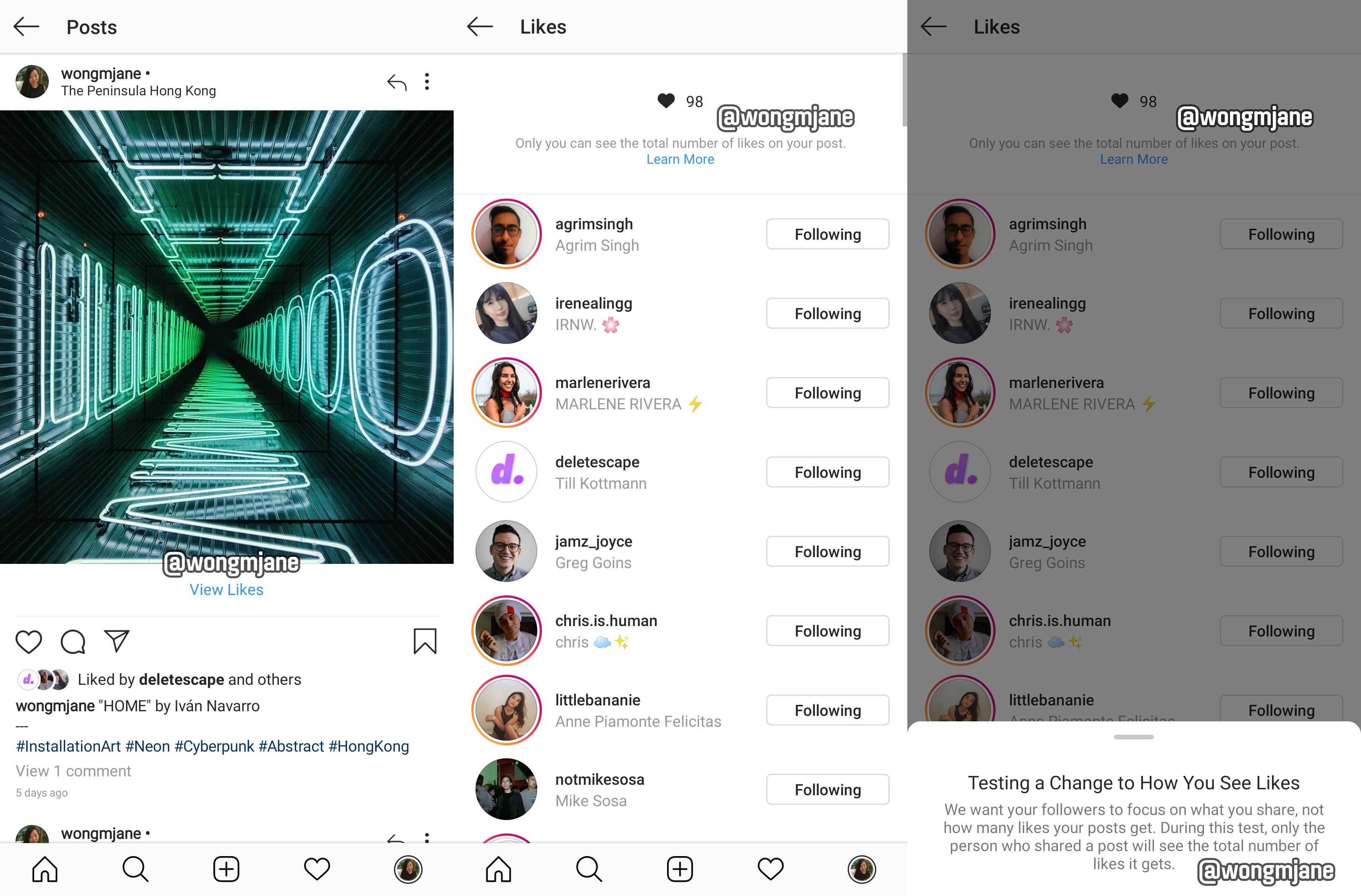
The design change test was spotted by Jane Manchun Wong, the prolific reverse engineering expert and frequent TechCrunch tipster whose spotted tons of Instagram features before they’re officially confirmed or launched. Wong discovered the design change test in Instagram’s Android code and was able to generate the screenshots above.
You can see on the left that the Instagram feed post lacks a Like count, but still shows a few faces and a name of other people who’ve Liked it. Users are alerted that only they’ll see their post’s Like counts, and anyone else won’t. Many users delete posts that don’t immediately get ‘enough’ Likes or post to their fake ‘Finstagram’ accounts if they don’t think they’ll be proud of the hearts they collect. Hiding Like counts might get users posting more since they’ll be less self-conscious.
An Instagram confirmed to TechCrunch that this design is an internal prototype that’s not visible to the public yet. A spokesperson told us: “We’re not testing this at the moment, but exploring ways to reduce pressure on Instagram is something we’re always thinking about.” Other features we’ve reported on in the same phase, such as video calling, soundtracks for Stories, and the app’s time well spent dashboard all went on to receive official launches.
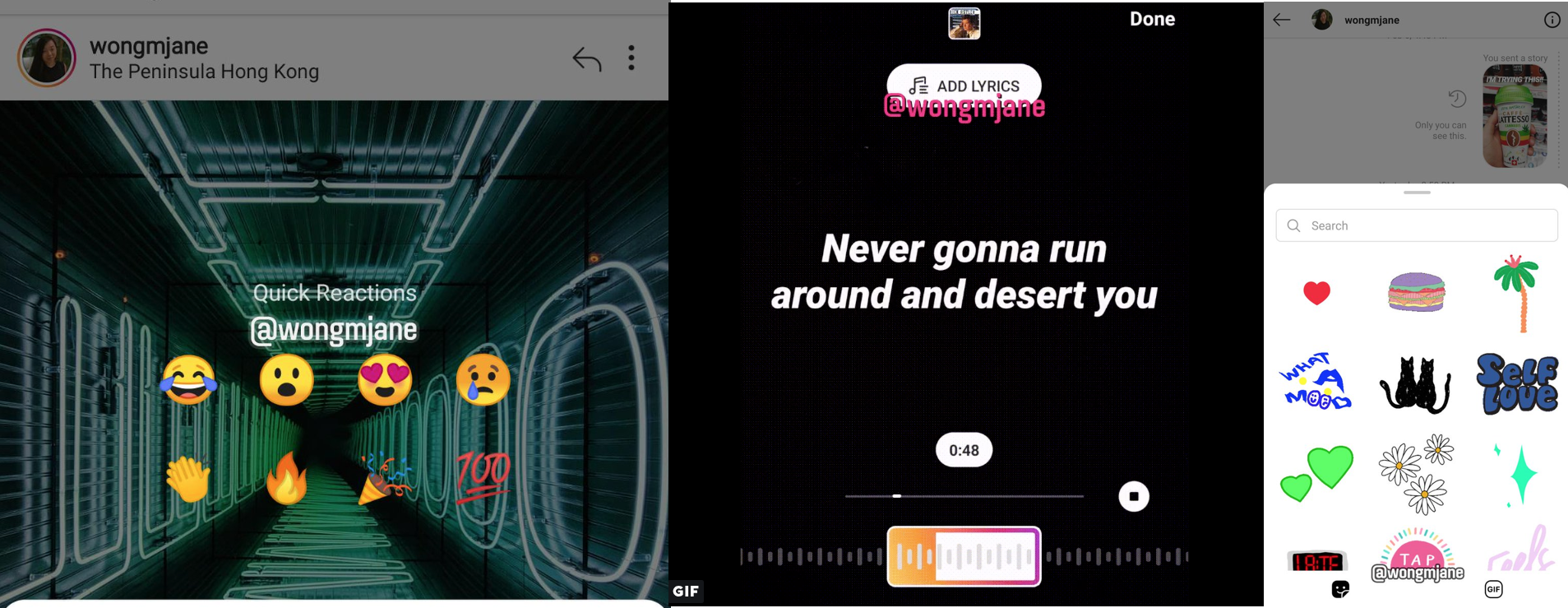
Instagram’s prototypes (from left): feed post reactions, Stories lyrics, and Direct stickers
Meanwhile, Wong has also recently spotted several other Instagram prototypes lurking in its Android code. Those include chat thread stickers for Direct messages, augmented reality filters for Direct Video calls, simultaneous co-watching of recommended videos through Direct, karaoke-style lyrics that appear synced to soundtracks in Stories, emoji reactions to feed posts, and a shopping bag for commerce.
It appears that there’s no plan to hide follower counts on user profiles, which are the true measure of popularity but also serve a purpose of distinguishing great content creators and assessing their worth to marketers. Hiding Likes could just put more of a spotlight on follower and comment counts. And even if users don’t see Like counts, they still massively impact the feed’s ranking algorithm, so creators will still have to battle for them to be seen.
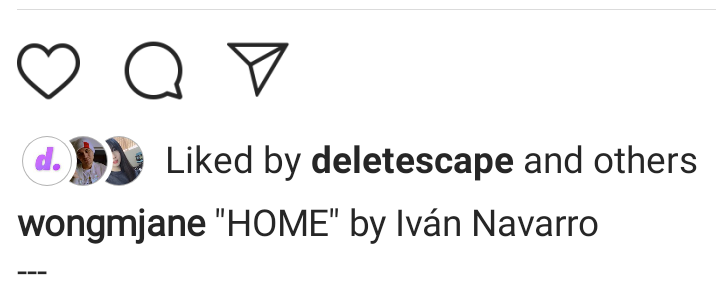
Close-up of Instagram’s design for feed posts without Like counters
The change matches a growing belief that Like counts can be counter-productive or even harmful to users’ psyches. Instagram co-founder Kevin Systrom told me back in 2016 that getting away from the pressure of Like counts was one impetus for Instagram launching Stories. Last month, Twitter began testing a design which hides retweet counts behind an extra tap to similarly discourage inauthentic competition and herd mentality. And Snapchat has never shown Like counts or even follower counts, which has made it feel less stressful but also less useful for influencers.
Narcissism, envy spiraling, and low self-image can all stem from staring at Like counts. They’re a constant reminder of the status hierarchies that have emerged from social networks. For many users, at some point it stopped being fun and started to feel more like working in the heart mines. If Instagram rolls the feature out, it could put the emphasis back on sharing art and self-expression, not trying to win some popularity contest.
Powered by WPeMatico
Quotes from articles are much more eye-catching than links on Twitter, so the social giant is scooping up the team behind highlight-sharing app Highly. This talent could help Twitter build its own version of Highly or develop other ways to excerpt the best content from websites and get it into the timeline.
Twitter confirmed to TechCrunch that the deal was an acqui-hire, and a spokesperson provided this statement: “We are excited to welcome the Highly team to Twitter. Their expertise will accelerate our product and design thinking around making Twitter more conversational.” We’ve asked about what data portability options Highly will offer.

Highly will shut down its iOS and Slack app on April 26th, though it promises that “No highlights will be harmed.” It’s also making its paid “Crowd Control” for private highlight sharing plus Highly For Teams free in the meantime.
“Social highlights can make sharing stories online feel personal, efficient and alive — like retelling a story to a friend, over coffee. They give people shared context and spark meaningful conversations,” the Highly team writes.
Quotes can make the difference between someone breezing past a link they don’t want to leave Twitter to explore, and getting a peek at what’s smart about an article so they know if it’s worth diving deeper. Many people use OneShot to generate Twitter-formatted screenshots of posts. But Highly lets you just rub your finger over text to turn it into an image with a link back to the article for easy tweeting. You could also search an archive of your past highlights, and follow curators who spot the best quotes. Its browser extensions and native app let you highlight from wherever you read.
Get Highly before Twitter shuts down its appshttps://t.co/3yLbfWW25l pic.twitter.com/xAEMG7oJai
— Josh Constine (@JoshConstine) April 17, 2019
“Sharing highlights, not headlines — sharing thinking instead of lazily linking — helps spark the kind of conversation that leaves participants and observers alike a bit better off than they started. We’d like to see more of this,” the Highly teams writes. That’s why it’s joining Twitter to work on improving conversation health. Founded in 2014, Highly had raised a seed round in 2017.

Twitter’s shift to algorithmic ranking of the timeline means every tweet has to compete to be seen. Blasting out links that are a chore to open and read can lead to low engagement, causing Twitter to show it to fewer people. Tools like Highly can give tweeters a leg up. And if Twitter can build these tools right into its service, it could allow more people to create appealing tweets so they actually feel heard.
Powered by WPeMatico
Sick of pausing and rewinding YouTube tutorials to replay that tricky part? Jumprope is a new instructional social network offering a powerful how-to video slideshow creation tool. Jumprope helps people make step-by-step guides to cooking, beauty, crafts, parenting and more using voice-overed looping GIFs for each phase. And creators can export their whole lesson for sharing on Instagram, YouTube or wherever.
Jumprope officially launches its iOS app today with plenty of how-tos for making chocolate chip bars, Easter eggs, flower boxes or fierce eyebrows. “By switching from free-form linear video to something much more structured, we can make it much easier for people to share their knowledge and hacks,” says Jumprope co-founder and CEO Jake Poses.

The rise of Snapchat Stories and Pinterest have made people comfortable jumping on camera and showing off their niche interests. By building a new medium, Jumprope could become the home for rapid-fire learning. And because viewers will have tons of purchase intent for the makeup, art supplies or equipment they’ll need to follow along, Jumprope could make serious cash off ads or affiliate commerce.
The opportunity to bring instruction manuals into the mobile video era has attracted a $4.5 million seed round led by Lightspeed Venture Partners and joined by strategic angels like Adobe Chief Product Officer Scott Belsky and Thumbtack co-founders Marco Zappacosta and Jonathan Swanson. People are already devouring casual education content on HGTV and the Food Network, but Jumprope democratizes its creation.

Jumprope co-founders (from left): CTO Travis Johnson and CEO Jake Poses
The idea came from a deeply personal place for Poses. “My brother has pretty severe learning differences, and so growing up with him gave me this appreciation for figuring out how to break things down and explain them to people,” Poses reveals. “I think that attached me to this problem of ‘how do you organize information so it’s simple and easy to understand?’ Lots and lots of people have this information trapped in their heads because there isn’t a way to easily share that.”
Poses was formerly the VP of Product at Thumbtack where he helped grow the company from 8 to 500 people and a $1.25 billion valuation. He teamed up with AppNexus’ VP of engineering Travis Johnson, who’d been leading a 50-person team of coders. “The product takes people who have knowledge and passion but not the skill to make video [and gives them] guard rails that make it easy to communicate,” Poses explains.
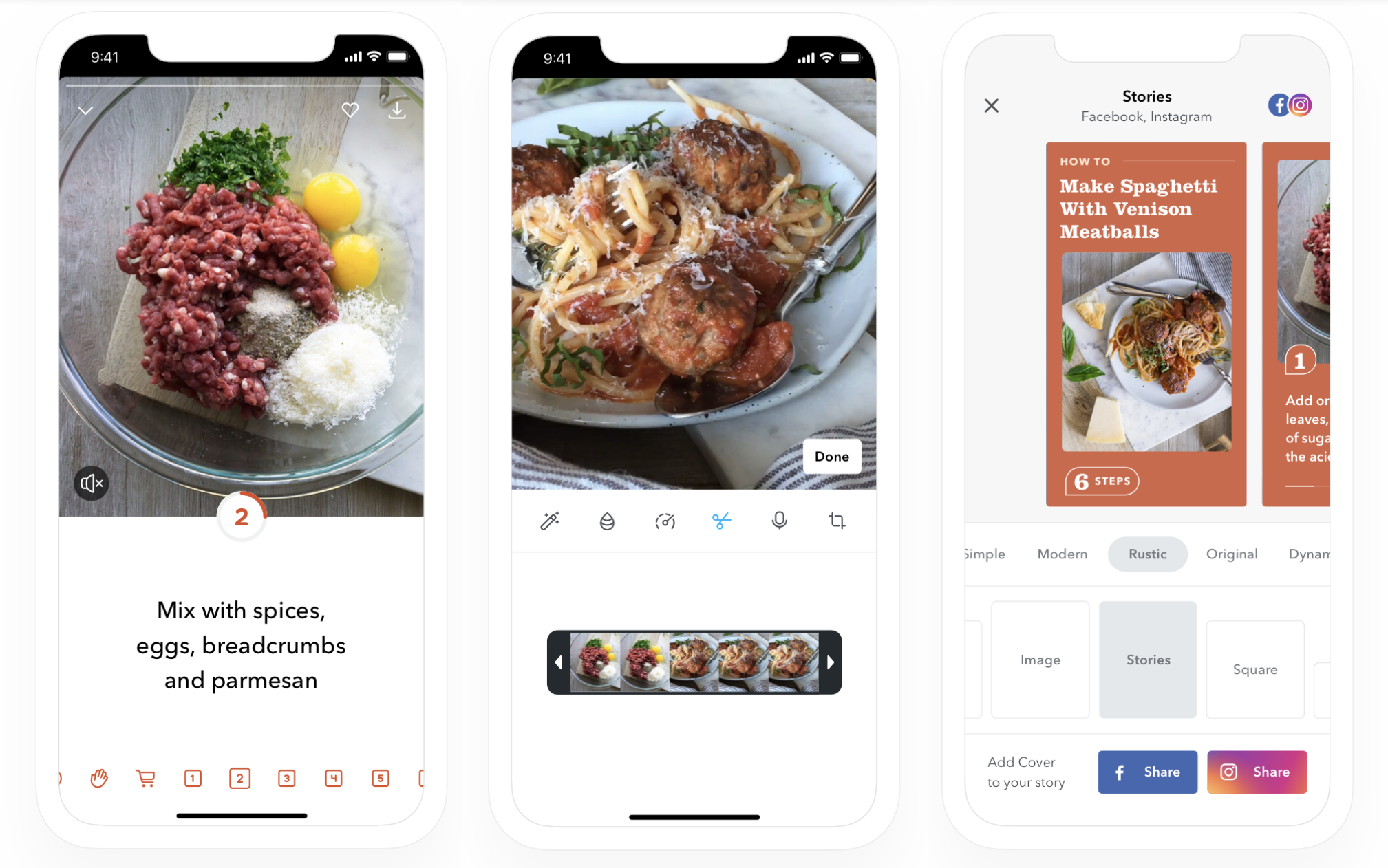
Disrupting incumbents like YouTube’s grip on viewers might take years, but Jumprope sees its guide creation and export tool as a way to infiltrate and steal their users. That strategy mirrors how TikTok’s watermarked exports colonized the web.
Jumprope lays out everything you’ll need to upload, including a cover image, introduction video, supplies list and all your steps. For each, you’ll record a video that you can then enhance with voice-over, increased speed, music and filters.
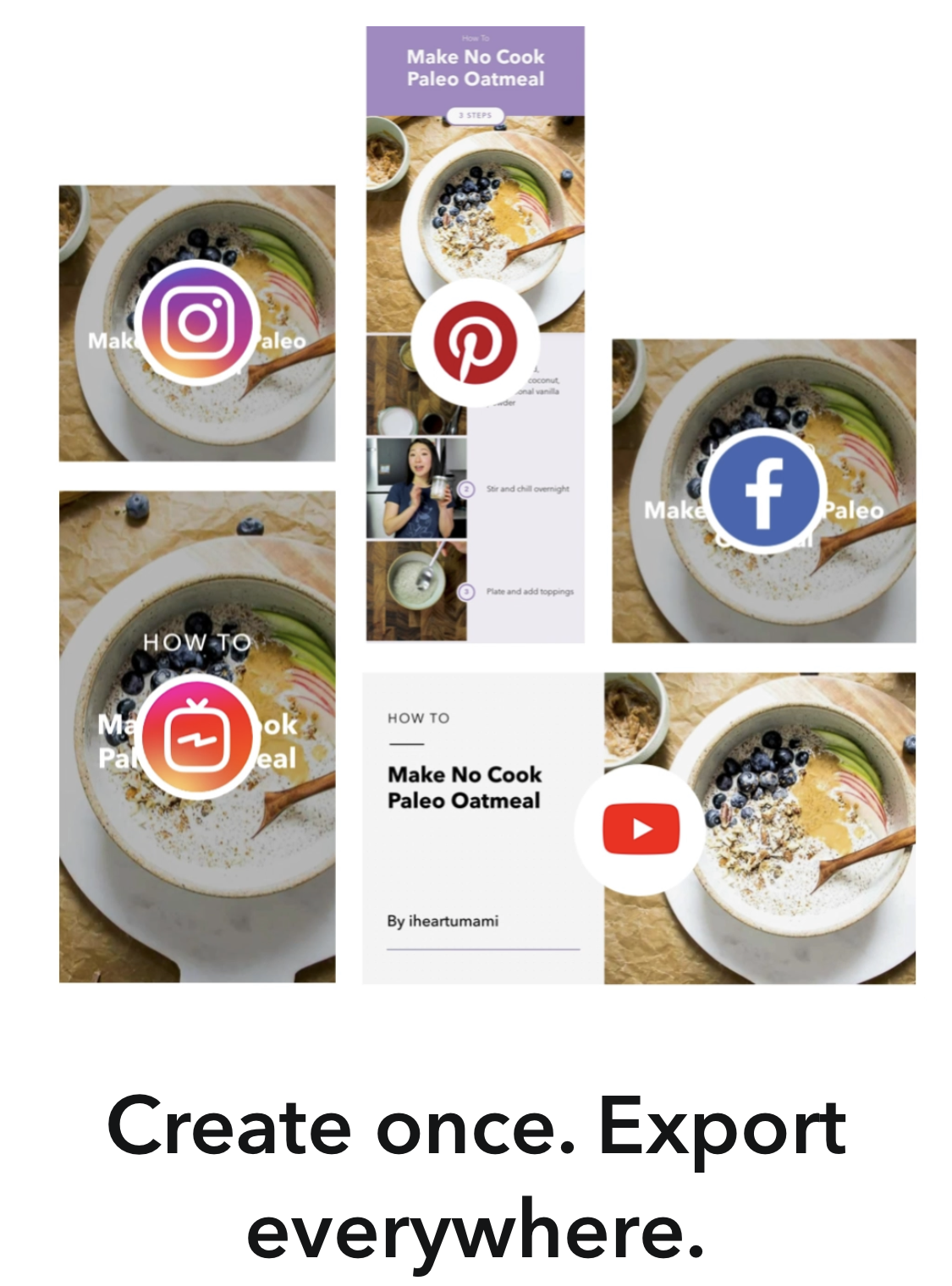 Creators are free to suggest their own products or enter affiliate links to monetize their videos. Once it has enough viewers, Jumprope plans to introduce advertising, but it could also add tipping, subscriptions, paid how-tos or brand sponsorship options down the line. Creators can export their lessons with five different border themes and seven different aspect ratios for posting to Instagram’s feed, IGTV, Snapchat Stories, YouTube or embedding on their blog.
Creators are free to suggest their own products or enter affiliate links to monetize their videos. Once it has enough viewers, Jumprope plans to introduce advertising, but it could also add tipping, subscriptions, paid how-tos or brand sponsorship options down the line. Creators can export their lessons with five different border themes and seven different aspect ratios for posting to Instagram’s feed, IGTV, Snapchat Stories, YouTube or embedding on their blog.
“Like with Stories, you basically tap through at your own pace,” Poses says of the viewing experience. Jumprope offers some rudimentary discovery through categories, themed collections or what’s new and popular. The startup has done extensive legwork to sign up featured creators in all its top categories. That means Jumprope’s catalog is already extensive, with food guides ranging from cinnabuns to pot roasts to how to perfectly chop an onion.
“You’re not constantly dealing with the frustration of cooking something and trying to start and stop the video with greasy hands. And if you don’t want all the details, you can tap through it much faster” than trying to skim a YouTube video or blog post, Poses tells me. Next the company wants to build a commenting feature where you can leave notes, substitution suggestions and more on each step of a guide.

Poses claims there’s no one building a direct competitor to its mobile video how-to editor. But he admits it will be an uphill climb to displace viewership on Instagram and YouTube. One challenge facing Jumprope is that most people aren’t hunting down how-to videos every day. The app will have to work to remind users it exists and that they shouldn’t just go with the lazy default of letting Google recommend the videos it hosts.
The internet has gathered communities around every conceivable interest. But greater access to creation and consumption necessitates better tools for production and curation. As we move from a material to an experiential culture, people crave skills that will help them forge memories and contribute to the world around them. Jumprope makes it a lot less work to leap into the life of a guru.
You can watch my first Jumprope here or below to learn how to tie up headphones without knots:
Powered by WPeMatico
Apple is working to combine its tracking apps “Find My iPhone” and “Find My Friends” into one unified app available on both iOS and Mac, according to a new report from the Apple news site 9to5Mac. In addition, the report says, Apple is developing a hardware product that can be attached to other items that Apple customers want to track — similar to what the Bluetooth tracker Tile offers today.
The idea is the new, unified app would then serve as a way to track anything — Apple devices, other important items like a handbag or backpack, as well as the location of family members and trusted friends. And all of this information would be securely synced to iCloud.
Meanwhile, the new hardware — codenamed “B389,” the report says — would represent a threat to Tile and other Bluetooth trackers on the market, as Apple would be able to capitalize on its massive install base of iPhones and other Apple devices to develop its own crowdsourced tracking-and-finding network.
The new hardware tag will be paired to a user’s iCloud account and users will be able to receive notifications when a device, like their iPhone, gets too far away from the tag. Users will also be able to configure locations to be ignored, and can opt to share a tag’s location with friends or family.
And like Tile, when the item with the tag attached goes missing, users could then put the tag into a “Lost” mode that would alert the owner when it’s found. The “finding” takes place by way of a crowdsourced network that includes every other Apple device owner who’s opted in to use this same tracking service, it would seem.
A large crowdsourced network is today one of Tile’s key advantages.
To date, the company has sold 24 million Tiles, which now connect to 4 million items daily with a 90 percent success rate, thanks to its own community-find feature. A competitive product from Apple could eat away at Tile’s business, while also serving as a new source of device revenue for Apple — and perhaps subscription revenues, too, for access to the crowd-finding network.
The reported merger of Apple’s two tracking applications comes at a time when Apple is rethinking how it wants to position its apps. Another recent report from 9to5Mac had confirmed Apple’s plans to break up iTunes, and instead bring new Music, podcasts and TV apps to Mac users. Apple will revamp its Books app as part of these changes, too, the report said.
It’s worth noting that there’s a big leak at Apple right now, and 9to5Mac is benefiting.
In addition to the news about the unified apps, Tile-like tracker and the breakup of iTunes, the site also leaked a big preview of iOS 13, which is said to include a system-wide dark mode, new gestures, visual changes and more. And just yesterday, the site reported that Apple is working on a feature that will allow users to pair a Mac with an iPad to use as a secondary display — something offered today by companies like Luna Display or Duet Display.
As for the new, unified “Find My…” app and hardware tag, no timeline to a public release is yet known.
Powered by WPeMatico
I’m excited to announce that The Europas Awards for European Tech Startups is really shaping up! The awards will be held on 27 June 2019, in London, U.K. on the front lawn of the Geffrye Museum in Hoxton, London — creating a fantastic and fun garden party atmosphere in the heart of London’s tech startup scene.
TechCrunch is once more the exclusive media sponsor of the awards and conference, alongside new “tech, culture & society” event creator The Pathfounder.
Here’s how to enter and be considered for the awards.
You can nominate a startup, accelerator or venture investor that you think deserves to be recognized for their achievements in the last 12 months.
*** The deadline for nominations is 1 May 2019 ***
For the 2019 awards, we’ve overhauled the categories to a set that we believe better reflects the range of innovation, diversity and ambition we see in the European startups being built and launched today. There are now 20 categories, including new additions to cover AgTech / FoodTech, SpaceTech, GovTech and Mobility Tech.
Attendees, nominees and winners will get discounts to TechCrunch Disrupt in Berlin, later this year.
The Europas “Diversity Pass”
We’d like to encourage more diversity in tech! That’s why, for the upcoming invitation-only “Pathfounder” event held on the afternoon before The Europas Awards, we’ve reserved a tranche of free tickets to ensure that we include more women and people of colour who are “pre-seed” or “seed-stage” tech startup founders. If you are a women founder or person of colour founder, apply here for a chance to be considered for one of the limited free diversity passes to the event.
The Pathfounder event will feature premium content and invitees, designed be a “fast download” into the London tech scene for European founders looking to raise money or re-locate to London.
The Europas Awards
The Europas Awards results are based on voting by expert judges and the industry itself.
But key to it is that there are no “off-limits areas” at The Europas, so attendees can mingle easily with VIPs.
The complete list of categories is here:
Timeline of The Europas Awards deadlines:
* 6 March 2019 – Submissions open
* 1 May 2019 – Submissions close
* 10 May 2019 – Public voting begins
* 18 June 2019 – Public voting ends
* 27 June 2019 – Awards Bash
Amazing networking
We’re also shaking up the awards dinner itself. Instead of a sit-down gala dinner, we’ve taken feedback for more opportunities to network. Our awards ceremony this year will be in the setting of a garden lawn party, where you’ll be able to meet and mingle more easily, with free-flowing drinks and a wide-selection of street food (including vegetarian/vegan). The ceremony itself will last approximately 75 minutes, with the rest of the time dedicated to networking. If you’d like to talk about sponsoring or exhibiting, please contact dianne@thepathfounder.com
Instead of thousands and thousands of people, think of a great summer event with the most interesting and useful people in the industry, including key investors and leading entrepreneurs.
The Europas Awards have been going for the last 10 years, and we’re the only independent and editorially driven event to recognise the European tech startup scene. The winners have been featured in Reuters, Bloomberg, VentureBeat, Forbes, Tech.eu, The Memo, Smart Company, CNET, many others — and of course, TechCrunch.
• No secret VIP rooms, which means you get to interact with the speakers
• Key founders and investors attending
• Journalists from major tech titles, newspapers and business broadcasters
Meet the first set of our 20 judges:
Brent Hoberman
Executive Chairman and Co-Founder
Founders Factory
Videesha Böckle
Founding Partner
signals Venture Capital

Bindi Karia
Innovation Expert + Advisor, Investor
Bindi Ventures

Christian Hernandez Gallardo
Co-Founder and Venture Partner at White Star Capital
Powered by WPeMatico
KZen is about to release ZenGo, a mobile app to manage your cryptocurrencies securely and more easily. There are already countless crypto wallets out there, but the startup thinks they’re all either too complicated or too insecure.
If you own cryptocurrencies, chances are they’re sitting on an exchange, such as Coinbase or Binance. If somebody manages to log in to your account, nothing is stopping them from sending those assets to other wallets and stealing everything.
Worse, if somebody hacks an exchange, they could potentially divert cryptocurrencies from that exchange’s wallets. In other words, leaving your cryptocurrencies on an exchange means you give your assets to that exchange and hope they properly take care of them.
On the other end of the spectrum, you can manage your private keys yourself and rely on a hardware wallet from Ledger and Trezor. The learning curve is too hard for many people. And if you don’t follow instructions properly, you might end up losing access to your wallet or accidentally sharing private keys.
Enough about other wallets, let’s talk about ZenGo. Former TechCrunch editor Ouriel Ohayon and his team think the perfect wallet app involves a smartphone you own paired with ZenGo’s servers.
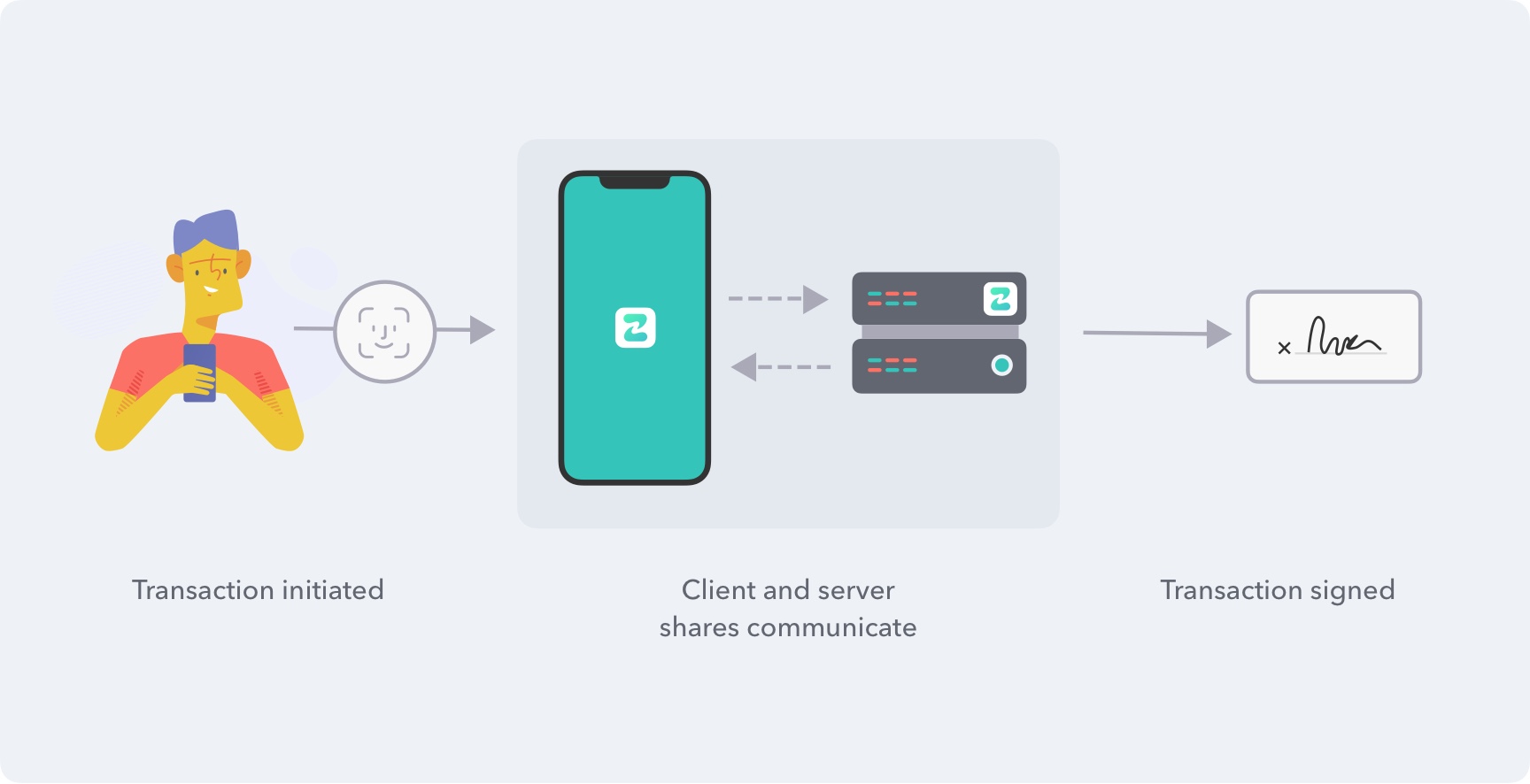
The company uses threshold signatures, which means that you need both ZenGo’s servers and your smartphone to initiate a transaction. If you lose your device, you can recover your funds. But the startup can’t access your cryptocurrencies on its own.
Behind the scene, ZenGo still uses a public key and private secrets, but everything is completely transparent for the end user.
When you set up your wallet, two private secrets are generated separately and stored in multiple ways — one part is on your smartphone, the other is on the servers. You need both parts to sign a transaction. If you back up your device part to ZenGo’s servers, you can recover all parts in case you lose your device, for instance.
ZenGo can’t directly access the second part on its own because it is encrypted using a decryption code that is stored on your iCloud account. But accessing your iCloud is not enough — if you want to recover your wallet, you need to prove your identity.
That’s why the company stores a 3D biometric face map to let you restore your wallet on a new device. The company partners with ZoOm so that you can create a face map from any smartphone with a selfie camera.
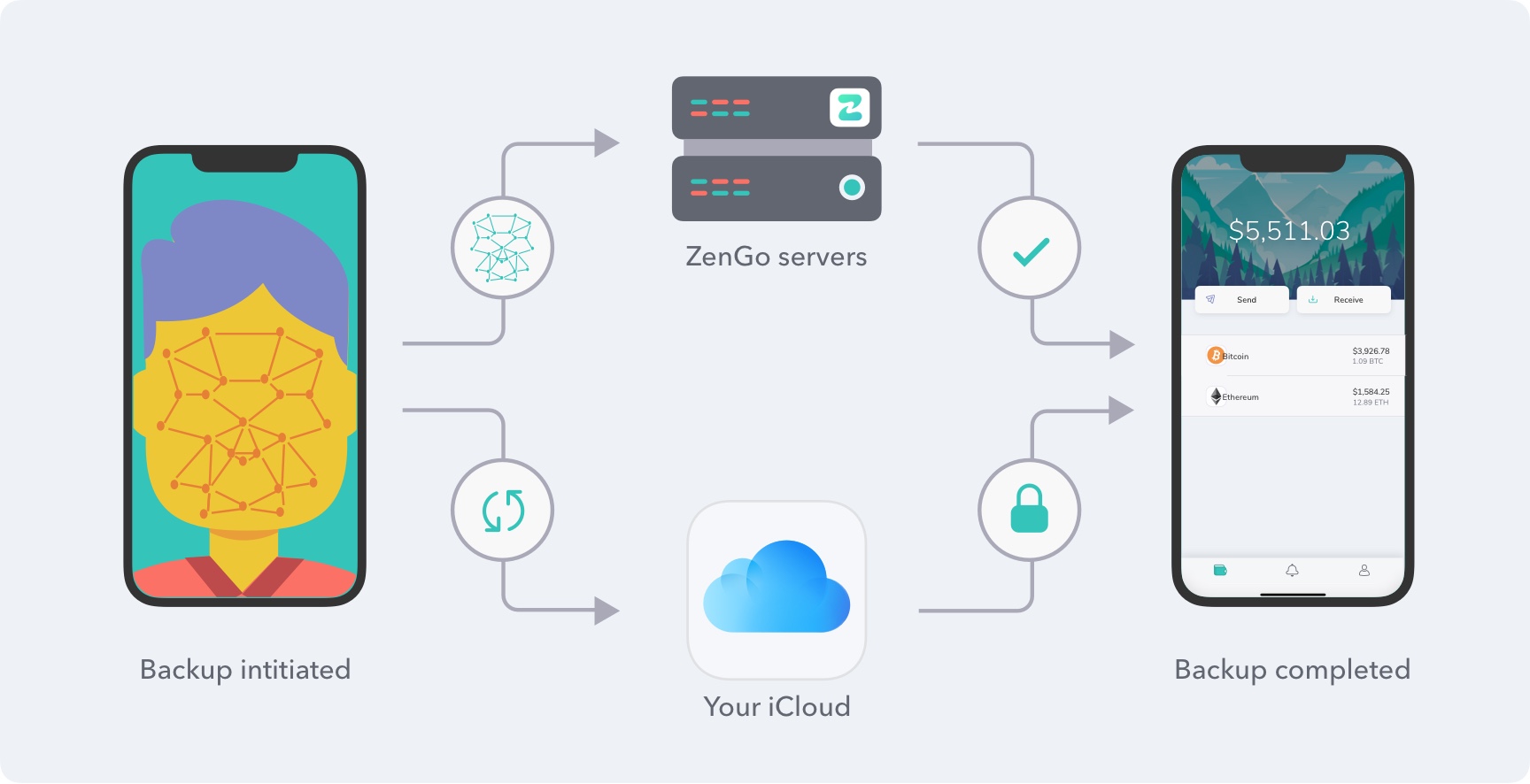
The security model has been open-sourced and I hope many security experts will try to find vulnerabilities. That’s the only way you can know for sure that it’s a secure system.
All of this sounds complicated, but most users won’t even realize what’s happening. I tried the app and it’s a well-designed mobile app. Right now, it only supports Bitcoin and Ethereum, but more assets are on the way. The company tracks your public addresses to notify you when you receive funds.
The app isn’t available just yet. It should launch as a beta this week and arrive in the stores pretty soon.

Powered by WPeMatico